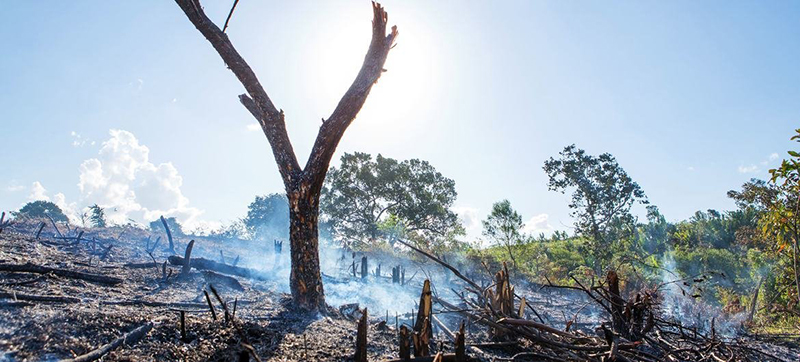 Deforestation
Deforestation
Natural resources must be ‘part of the solution’ in fight against deforestation
New York: Between 2010 and 2018, the rate of deforestation worlwide slowed by nearly 30 per cent compared to the previous ten years, according to a key report launched on Tuesday by the Food and Agriculture Organization (FAO).
The Global Forest Resources Assessment Remote Sensing Survey warned however, that from livestock grazing in South America to the expansion of croplands in Asia, the earth’s tropical rainforests still face a tremendous threat.
“This survey is important, not just for the new numbers it gives us but for what it tells us about forest area trends and what’s driving deforestation, also the crucial ability it gives us to monitor how things are evolving,” said FAO Deputy Director-General, Maria Helena Semedo.
Losses halved
Annual deforestation decreased by around 29 per cent – from 11 million hectares per year between 2000 and 2010, to 7.8 million hectares from 2010 to 2018, the survey revealed.
Moreover, net forest area losses have more than halved during the survey period – from 6.8 million hectares annually between 2000 and 2010 down to 3.1 million hectares per year from 2010 to 2018.
By region, the highest level of deforestation between 2000 and 2018 occurred in South America (68 million hectares deforested), followed by Africa (49 million hectares).
This is despite a slower deforestation rate in South America and South and southeast Asia between 2000 and 2018.
“Unsustainable agricultural development and other land uses continue to put intense pressure on our forests, especially in many of the poorest countries,” Ms. Semedo explained.
Unsustainable development
Meanwhile from 2000 to 2018, tropical forest losses accounted for more than 90 per cent of global deforestation.
And while that equals 157 million hectares – roughly the size of western Europe – annual deforestation in the tropics slowed significantly from 10.1 million hectares per year between 2000 and 2010 to seven million hectares annually 2010 to 2018.
“There are win-win solutions which we can and must scale up, to feed the world without destroying our forests,” assured the FAO official.
Driving deforestation
Cropland expansion is the main driver of deforestation, responsible for nearly half of global deforestation, followed by livestock grazing, accounting for 38.5 per cent.
From 2000 to 2018, oil palm planting alone accounted for seven per cent of the global deforestation.
While the survey suggests that tropical regions of Central America are most severely threatened by land-use conversion, similar phenomena were detected in the region’s tropical dry forest and shrubland.
However, the small number of samples in these ecoregions, means further investigations are needed to confirm these findings.
Tap solutions in nature
The XV World Forestry Congress (WFC) opened on Monday, in Seoul, Korea, as well as online.
Kicking off the event, Ms. Semedo said that “no matter which crises we are facing – a pandemic, conflicts, climate change – and [their] resulting economic recession and food insecurity, we must consider our forests and our natural resources as part of the solution and integrate them in recovery plans and strategies.”
The Collaborative Partnership on Forests (CPF) states that protecting forests helps tackle climate change, boost food security, conserve biodiversity and boost efforts to create a poverty-free world.
State of forests
Under the main theme Building a green, healthy and resilient future with forests, leaders from the FAO, the World Bank, and youth and Indigenous representatives participated in discussions
In addition to the survey launch, as part of the Forestry Resources Assessment 2020, FAO on Monday launched its flagship State of the World’s Forests Report 2022.
The report underscored the three mutually reinforcing pathways of halting deforestation and maintaining forests; restoring degraded lands and expanding reforestation; and ensuring sustainable value chains.
Other key findings included the need to enshrine tenure rights; provide incentives and remove disincentives for forest conservation; and the urgency of addressing the conflict between forest conservation and other development needs.
Support Our Journalism
We cannot do without you.. your contribution supports unbiased journalism
IBNS is not driven by any ism- not wokeism, not racism, not skewed secularism, not hyper right-wing or left liberal ideals, nor by any hardline religious beliefs or hyper nationalism. We want to serve you good old objective news, as they are. We do not judge or preach. We let people decide for themselves. We only try to present factual and well-sourced news.






